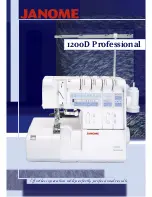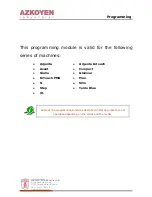Reviews:
No comments
Related manuals for Huskylock 341

1200D
Brand: Janome Pages: 2

659
Brand: Janome Pages: 25

EC-1 Series
Brand: Toyota Pages: 39

96-41
Brand: Singer Pages: 34

BRC 30 CUL
Brand: Kärcher Pages: 44

UTB 250 A1 - 3
Brand: UNITED OFFICE Pages: 44

Argenta
Brand: Azkoyen Pages: 88

ADVANTAGE-400H Series
Brand: U.S. Products Pages: 8

sitdown
Brand: Encore Pages: 28

T/TTB 455S
Brand: Numatic Pages: 28

CK-441
Brand: Chikon Pages: 17

B 150 R
Brand: Kärcher Pages: 260

CombBind DB28Pro
Brand: GBC Pages: 22

F-60
Brand: Muratec Pages: 86

AMS-210E-1306
Brand: JUKI Pages: 128

KX-F206TW
Brand: Panasonic Pages: 33

KX-F155
Brand: Panasonic Pages: 76

KX-F1200
Brand: Panasonic Pages: 92

















